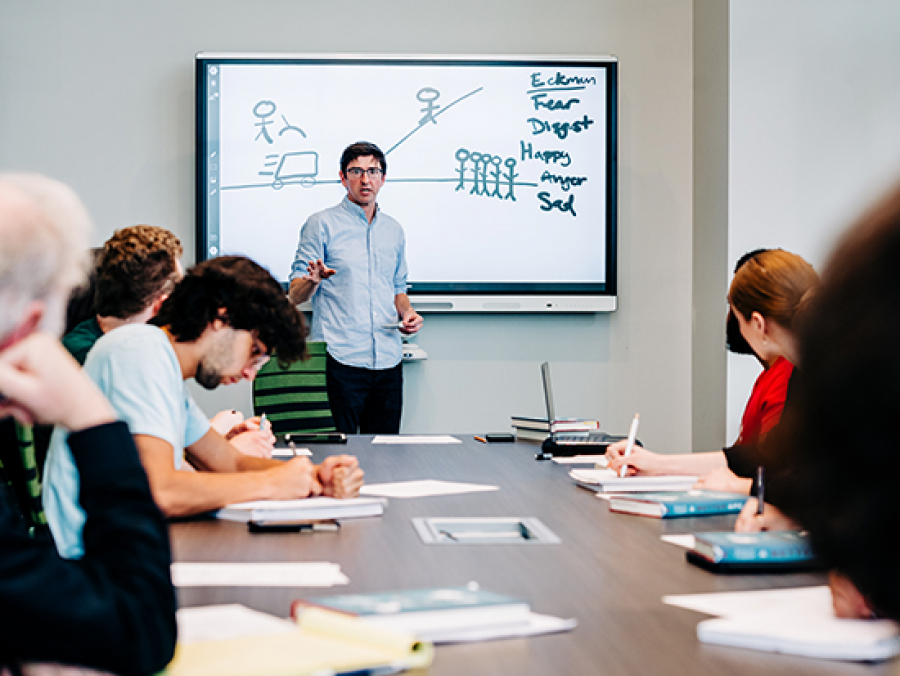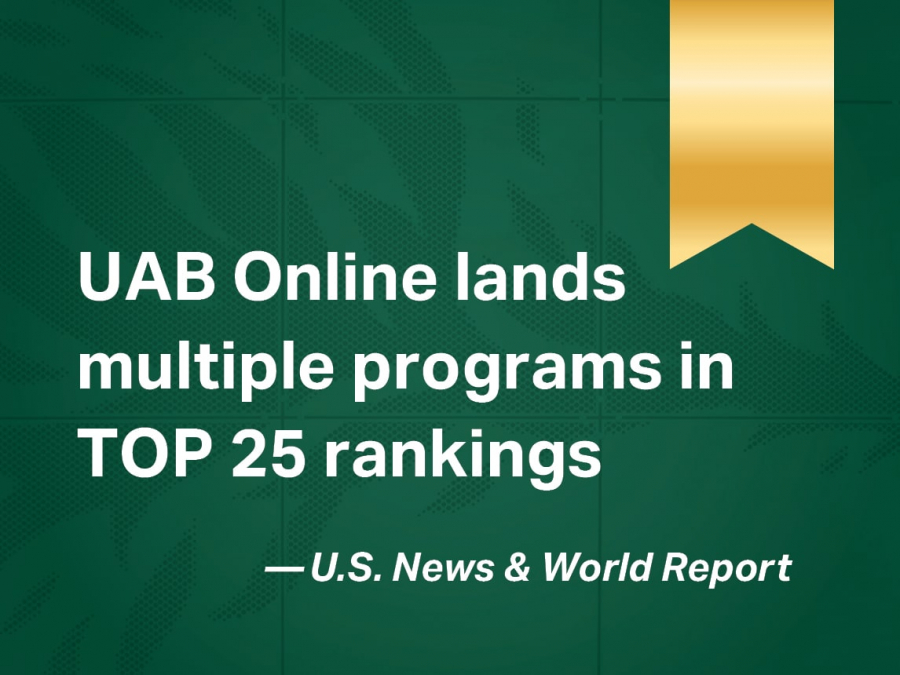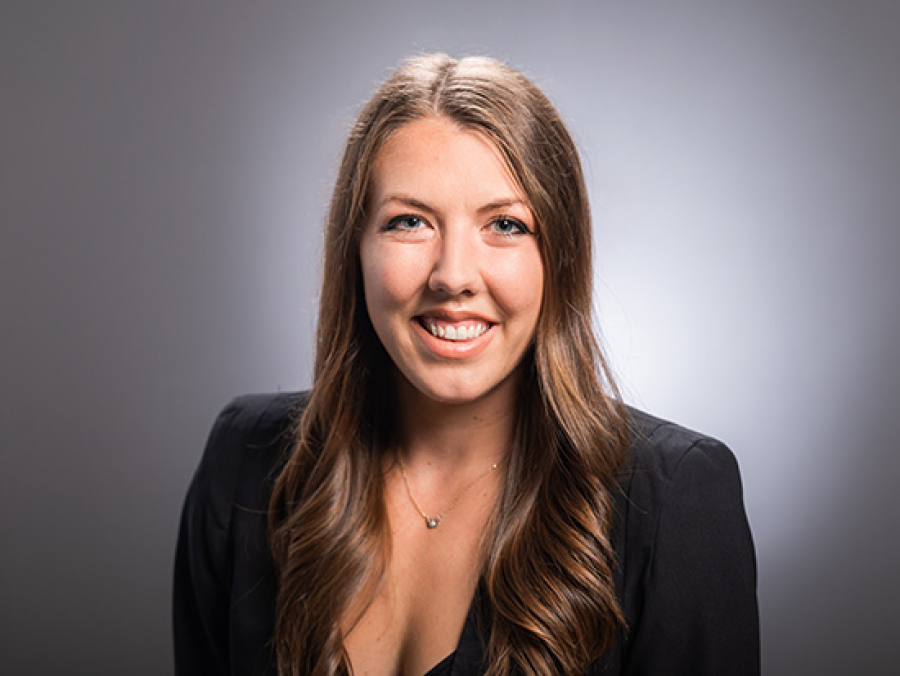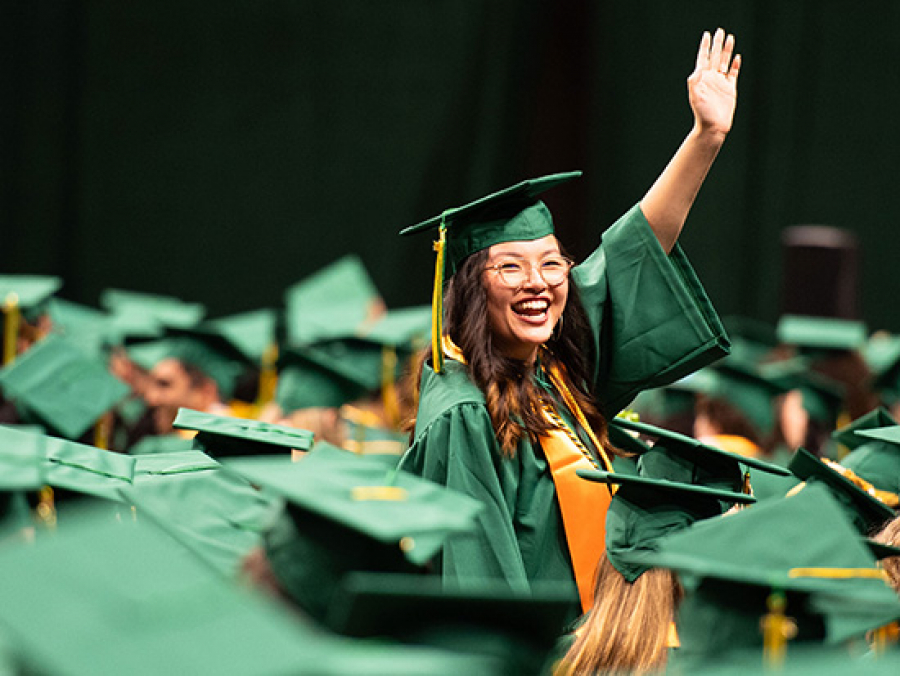-
 EBSCO Grant Supporting High School STEM InternshipsThe UAB Center for Community Outreach Development (CORD) was thrilled to receive a second consecutive $30,000 grant from EBSCO Community Impact to support EBSCO Scholars: Summer Science Institute III (SSI III)—an eight-week immersive research program that engages high school students in hands-on scientific exploration and introduces them to STEM career pathways.
EBSCO Grant Supporting High School STEM InternshipsThe UAB Center for Community Outreach Development (CORD) was thrilled to receive a second consecutive $30,000 grant from EBSCO Community Impact to support EBSCO Scholars: Summer Science Institute III (SSI III)—an eight-week immersive research program that engages high school students in hands-on scientific exploration and introduces them to STEM career pathways. -
 Charting a Different Course - New CAS majors and programs help prepare students for ever-changing career optionsA recent article in the Wall Street Journal listed the city of Birmingham as being one of “the top five most promising locations to find work for recent college graduates.” The University of Alabama at Birmingham College of Arts and Sciences is doing its part to prepare students for a wide variety of job opportunities within the Magic City and beyond.
Charting a Different Course - New CAS majors and programs help prepare students for ever-changing career optionsA recent article in the Wall Street Journal listed the city of Birmingham as being one of “the top five most promising locations to find work for recent college graduates.” The University of Alabama at Birmingham College of Arts and Sciences is doing its part to prepare students for a wide variety of job opportunities within the Magic City and beyond. -
 Honoring Dr. Clarence “Clancy” Blair Jr.Across more than two decades of innovation, mentorship, and advocacy, Professor Clarence “Clancy” Blair, PhD, established himself as an internationally respected leader in the fields of early childhood development, developmental neuroscience, and education.
Honoring Dr. Clarence “Clancy” Blair Jr.Across more than two decades of innovation, mentorship, and advocacy, Professor Clarence “Clancy” Blair, PhD, established himself as an internationally respected leader in the fields of early childhood development, developmental neuroscience, and education. -
 This “dopamine aficionado” is exploring new approaches to a Parkinson’s puzzleUAB neuroscientist Kauê Machado Costa, Ph.D., assistant professor in the Department of Psychology, received a Parkinson's Foundation grant to test an intriguing hypothesis: The cognitive deficits now known to occur in the early years of Parkinson's disease may be a clue that learning-oriented dopamine circuits shift gears to cover for their movement-focused cousins. If Costa’s...
This “dopamine aficionado” is exploring new approaches to a Parkinson’s puzzleUAB neuroscientist Kauê Machado Costa, Ph.D., assistant professor in the Department of Psychology, received a Parkinson's Foundation grant to test an intriguing hypothesis: The cognitive deficits now known to occur in the early years of Parkinson's disease may be a clue that learning-oriented dopamine circuits shift gears to cover for their movement-focused cousins. If Costa’s... -
 Bryan Preer II and Abby Kulkarni crowned Mr. and Ms. UAB 2026For 45 years, this competition has highlighted UAB students who excel in academics, leadership and community involvement, all while showing true Blazer spirit.
Bryan Preer II and Abby Kulkarni crowned Mr. and Ms. UAB 2026For 45 years, this competition has highlighted UAB students who excel in academics, leadership and community involvement, all while showing true Blazer spirit. -
 Two faculty members secure multi-year Health Resources and Services Administration grants totaling nearly $2.7 millionSylvie Mrug, Ph.D., and Maria Hopkins, Ph.D., have each been awarded a grant from the HRSA, marking a historic milestone as the first recipients of this grant within the UAB College of Arts and Sciences.
Two faculty members secure multi-year Health Resources and Services Administration grants totaling nearly $2.7 millionSylvie Mrug, Ph.D., and Maria Hopkins, Ph.D., have each been awarded a grant from the HRSA, marking a historic milestone as the first recipients of this grant within the UAB College of Arts and Sciences. -
 Learn about colorblindness at UAB’s AEIVA in SeptemberHear “The Science of Color Vision” lecture Sept. 9, and get screened for colorblindness Sept.
Learn about colorblindness at UAB’s AEIVA in SeptemberHear “The Science of Color Vision” lecture Sept. 9, and get screened for colorblindness Sept. -
 Understanding aphantasia: Research examines why some minds cannot visualizeAphantasia is the inability to create mental images, and many individuals with the condition remain unaware until adulthood.
Understanding aphantasia: Research examines why some minds cannot visualizeAphantasia is the inability to create mental images, and many individuals with the condition remain unaware until adulthood. -
 Mother-daughter duo, inspirational mentor graduate with UAB’s AI in Medicine certificates and hope to better care for patientsA decade after losing her mother to a rare brain virus, UAB graduate Julie Schifanella is learning to use artificial intelligence to help other patients.
Mother-daughter duo, inspirational mentor graduate with UAB’s AI in Medicine certificates and hope to better care for patientsA decade after losing her mother to a rare brain virus, UAB graduate Julie Schifanella is learning to use artificial intelligence to help other patients. -
 Understanding teen DNA aging: Key insights for parentsTwo risk factors for early puberty parents can monitor are a teen’s diet and sleep habits.
Understanding teen DNA aging: Key insights for parentsTwo risk factors for early puberty parents can monitor are a teen’s diet and sleep habits. -
 Ball receives award from the American Psychological AssociationKarlene Ball was recognized for her lifetime achievements in the field of psychology and aging.
Ball receives award from the American Psychological AssociationKarlene Ball was recognized for her lifetime achievements in the field of psychology and aging. -
 College of Arts and Sciences faculty members published 17 books in 2024College of Arts and Sciences faculty gathered at the Abroms-Engel Insitute for the Visual Arts on April 21 to celebrate 19 authors.
College of Arts and Sciences faculty members published 17 books in 2024College of Arts and Sciences faculty gathered at the Abroms-Engel Insitute for the Visual Arts on April 21 to celebrate 19 authors. -
 Nine students receive 2025 College of Arts and Sciences Dean’s AwardsThroughout the Spring 2025 semester, departments across the University of Alabama at Birmingham’s College of Arts and Sciences submitted nominations for the Dean’s Awards for Outstanding Undergraduate Students and Outstanding Graduate Students.
Nine students receive 2025 College of Arts and Sciences Dean’s AwardsThroughout the Spring 2025 semester, departments across the University of Alabama at Birmingham’s College of Arts and Sciences submitted nominations for the Dean’s Awards for Outstanding Undergraduate Students and Outstanding Graduate Students. -
 Psychology faculty member wants to better understand how personal interactions can impact healthCan our interactions with other people, including our partners and family members, affect our immune systems and produce inflammation and pain in the body?
Psychology faculty member wants to better understand how personal interactions can impact healthCan our interactions with other people, including our partners and family members, affect our immune systems and produce inflammation and pain in the body? -
 5 things a philosopher learned from diving deep into neuroscienceFree will still exists, and no brains are “typical”: Philosopher Josh May, Ph.D., shares some of the lessons he picked up by going back to school and joining a research lab to write “Neuroethics: Agency in the Age of Brain Science,” which was selected as one of the top academic titles of 2024.
5 things a philosopher learned from diving deep into neuroscienceFree will still exists, and no brains are “typical”: Philosopher Josh May, Ph.D., shares some of the lessons he picked up by going back to school and joining a research lab to write “Neuroethics: Agency in the Age of Brain Science,” which was selected as one of the top academic titles of 2024. -
 UAB Online lands multiple programs in top 25 rankingsOne of UAB’s online master’s degrees ranked in the top three, marking the highest USNWR ranking for a UAB online program in history.
UAB Online lands multiple programs in top 25 rankingsOne of UAB’s online master’s degrees ranked in the top three, marking the highest USNWR ranking for a UAB online program in history. -
 NARSAD award will allow rare glimpse into the neural mechanisms of depressionRachel Smith, Ph.D., is collaborating with researchers across UAB on the two-year project, which will focus on the intracranial neural networks responsible for major depressive symptoms in epilepsy patients.
NARSAD award will allow rare glimpse into the neural mechanisms of depressionRachel Smith, Ph.D., is collaborating with researchers across UAB on the two-year project, which will focus on the intracranial neural networks responsible for major depressive symptoms in epilepsy patients. -
 Sarah Atkinson has had psychology on her mind since an early age“I was always an existential-type kid,” said Atkinson. “I enjoyed psychology because it’s essentially the study of humans and human behavior, and how everything interacts with one another from a psychological perspective.
Sarah Atkinson has had psychology on her mind since an early age“I was always an existential-type kid,” said Atkinson. “I enjoyed psychology because it’s essentially the study of humans and human behavior, and how everything interacts with one another from a psychological perspective. -
 UAB fall commencement is Dec. 14 at Bartow ArenaMore than half of the university’s 1,954 graduating students will walk in commencement this semester. The UAB President’s Medal will be awarded to Marnix E.
UAB fall commencement is Dec. 14 at Bartow ArenaMore than half of the university’s 1,954 graduating students will walk in commencement this semester. The UAB President’s Medal will be awarded to Marnix E. -
 CAS Graduate Research Day spotlights research and the changing landscape of graduate educationOn November 20, 2024, the College of Arts and Sciences (CAS) hosted its first-ever Graduate Research Day at the University of Alabama at Birmingham’s Alumni House.
CAS Graduate Research Day spotlights research and the changing landscape of graduate educationOn November 20, 2024, the College of Arts and Sciences (CAS) hosted its first-ever Graduate Research Day at the University of Alabama at Birmingham’s Alumni House.